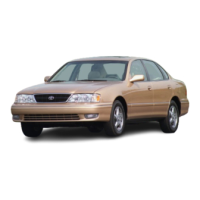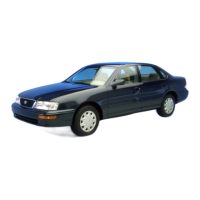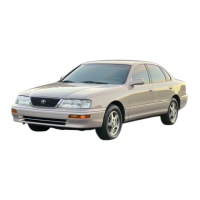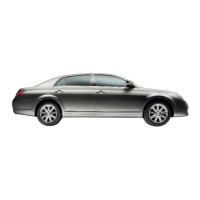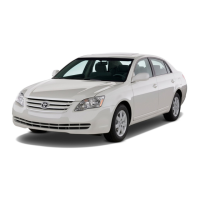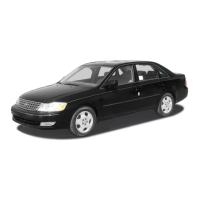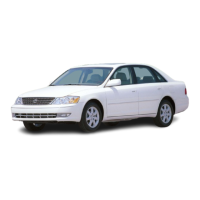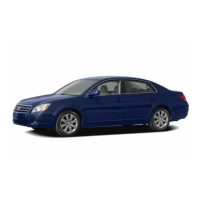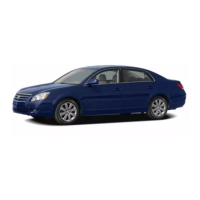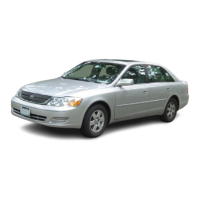
Do you have a question about the Toyota AVALON 1999 and is the answer not in the manual?
| Brand | Toyota |
|---|---|
| Model | AVALON 1999 |
| Category | Automobile |
| Language | English |
Details the car's dashboard layout, gauges, and indicator symbols.
Describes vehicle keys, their functions, and the engine immobiliser anti-theft system.
Instructions for operating power windows, including driver and passenger controls.
Explains the vehicle's anti-theft alarm system, its activation, and alarm conditions.
Guidelines for proper seating posture, seat belt usage, and airbag safety precautions.
How to record and recall preferred driving seat positions for multiple drivers.
Details on front airbag system function, safety precautions, and warning lights.
Information on side airbag system function and safety advice for occupants.
Essential safety guidelines for using child restraint systems and child passenger safety.
Operation of exterior lights, wipers, washers, and defogger systems.
Explains fuel, coolant, tachometer gauges, odometer, and dashboard warning lights.
How to operate the ignition switch, transmission, parking brake, and cruise control.
Details on car audio system operation and air conditioning controls.
Information on clock, glove box, auxiliary box, cup holder, and traction control system.
Guidance on the initial break-in period and recommended fuel types for optimal vehicle life.
Critical safety warnings regarding engine exhaust fumes, ventilation, and potential hazards.
Explanation of the dual-circuit brake system, brake booster, and Anti-lock Brake System (ABS).
Guidelines for safely stowing luggage to maintain vehicle balance and prevent injury during transit.
Information on tire types and warnings about mixing tire types and usage.
Pre-driving checks, engine starting, and tips for driving in various conditions.
Essential advice for driving safely in cold weather, including antifreeze and battery checks.
Effects of trailer towing on performance, safety, and maintenance, plus emergency equipment.
Advice on improving fuel economy and extending vehicle lifespan through driving habits and maintenance.
Troubleshooting for vehicles that won't start, stall, overheat, or have flat tires.
Detailed instructions for connecting jumper cables for safely jump-starting a vehicle's battery.
Comprehensive guide to changing a flat tire, including safety precautions and tool usage.
Causes of corrosion and guidelines for preventing it through cleaning and paint care.
Proper methods for washing and waxing the vehicle to maintain its finish and prevent corrosion.
How to clean interior surfaces like upholstery, carpets, seat belts, and windows safely.
Importance of owner responsibility for maintenance and warranty requirements.
Outline of general maintenance tasks that owners can perform regularly.
Clues indicating when the vehicle might require professional service or adjustment.
Overview of engine compartment, fuse locations, DIY precautions, and tools.
Critical safety warnings and precautions to observe when performing vehicle maintenance.
Procedures for checking engine oil, coolant, brake fluid, tire pressure, and replacing wheels.
Checks for battery condition, recharging, fuse replacement, and light bulb replacement.
Step-by-step instructions for removing and installing headlight bulbs.
Key physical dimensions and weight ratings for the vehicle.
Details on engine model, type, displacement, and recommended fuel type.
Tire size, pressure, wheel torque, and detailed fuse listings by location and circuit.
How U.S. owners should report vehicle safety defects to NHTSA and Toyota.
Explanation of tire grading factors: Treadwear, Traction (AA, A, B, C), and Temperature (A, B, C).
